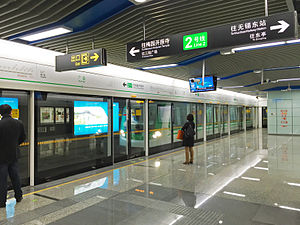
Tanwei Station, formerly Datansha South Station (大坦沙南站) and Datansha Station during planning, is an elevated station on Line 5 of the Guangzhou Metro and an underground station on Line 6. It is located at Zhongshuangqiao Park (中双桥公园) on Datansha Island in the Liwan District. It opened on 28 December 2009. It became an interchange station between Line 5 and Line 6 on 28 December 2013.

Nanzhou Station, formerly Nanzhou Coach Station (南洲客运站) during its planning stages, is an interchange station between Line 2 on the Guangzhou Metro and Line 1 on the Guangfo Metro.
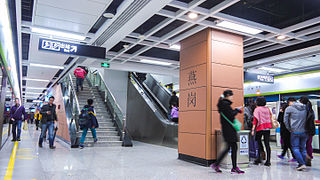
Yangang Station, formerly Jiangyan Lu Station (江燕路站), is a station on Guangfo Metro Line 1 of the Guangzhou Metro. It is located under Gongye Avenue (工业大道) in the Haizhu District of Guangzhou. It entered operation on December 28, 2015.

The Guangzhou North railway station is a railway station in Guangdong Province, China, opened in 1908. It is located in Huadu District in far northern suburbs of Guangzhou.
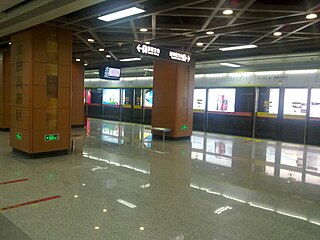
Financial Hi-Tech Zone Station is a metro station on Guangfo Line of the Guangzhou Metro. It is located under the Guangdong Financial High Tech Service Zone (广东金融高新技术服务区), in Haiba Road (海八路) in the Guicheng Subdistrict of the Nanhai District, Foshan. It was completed on 3 November 2010.

Sanyang Plaza station, is an interchange station of Line 1 and Line 2 of the Wuxi Metro. It started operations on 1 July 2014. It is the largest metro station of China.

Wuyi Square station is a subway station in Changsha, Hunan, China, operated by the Changsha subway operator Changsha Metro.

Xibei Canal Station, is a metro station of Line 1, Wuxi Metro. It started operations on 1 July 2014.

Tianyi Station, is a metro station of Line 1, Wuxi Metro. It started operations on 1 July 2014.

Minfeng Station, is a metro station of Line 1, Wuxi Metro. It started operations on 1 July 2014.
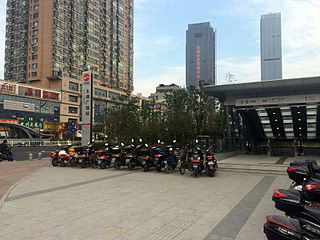
Taihu Square Station, is a metro station of Line 1, Wuxi Metro. It started operations on 1 July 2014.

Huaqingdaqiao Station, is a metro station of Line 1, Wuxi Metro. It started operations on 1 July 2014.
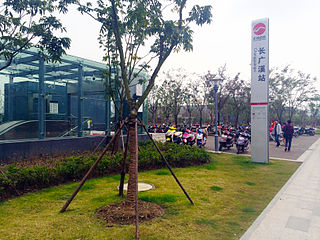
Changguangxi Station, is the eastern terminus of Line 1, Wuxi Metro. It started operations on 1 July 2014.

Dawangji Station, is a metro station of Line 2, Wuxi Metro. It started operations on 28 December 2014.

Liangxidaqiao Station, is a metro station of Line 2, Wuxi Metro. It started operations on 28 December 2014.

Wu'ai Plaza Station, is a metro station of Line 2, Wuxi Metro. It started operations on 28 December 2014.

Donglin Plaza Station, is a metro station of Line 2, Wuxi Metro. It started operations on 28 December 2014. The station is near Donglin Academy.

Baizhuang Station, is a metro station of Line 2, Wuxi Metro. It started operations on 28 December 2014.

People Square is a metro station on Line 2, also is the future station of Line 5 of the Hangzhou Metro in China. It is located in the Xiaoshan District of Hangzhou. This station has eight exits.
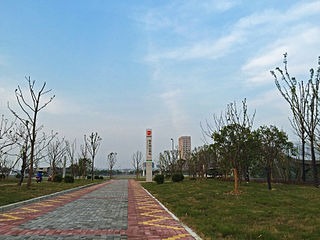
Yingyuehu Park Station Station, is a metro station of Line 2, Wuxi Metro. It started operations on 28 April 2015. It will be the terminus of line 4.


